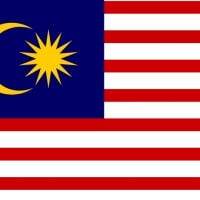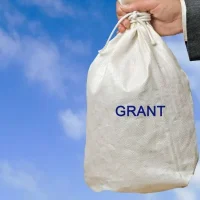The United States Department of Labor (DOL) was established in 1913, a time when the nation was grappling with rapid industrialization and the accompanying social challenges. The rise of factories and urban centers brought about significant changes in the workforce, leading to a surge in labor movements advocating for better working conditions, fair wages, and the right to organize. Recognizing the need for a federal entity to address these issues, President William Howard Taft signed the act that created the DOL, marking a pivotal moment in American labor history.
The department was initially tasked with collecting and disseminating labor statistics, but its role quickly expanded to encompass a broader range of responsibilities aimed at protecting workers’ rights. Throughout its history, the DOL has evolved in response to the changing dynamics of the American workforce. The Great Depression of the 1930s prompted significant legislative action, including the establishment of the Fair Labor Standards Act in 1938, which set minimum wage and overtime pay standards.
This period also saw the rise of labor unions, which played a crucial role in advocating for workers’ rights. Over the decades, the DOL has continued to adapt to new challenges, such as globalization, technological advancements, and shifts in labor demographics. Today, it stands as a vital institution dedicated to ensuring fair labor practices and promoting the welfare of American workers.
Responsibilities and Functions of the United States Department of Labor (DOL)
Enforcing Federal Labor Laws
One of the DOL’s primary functions is to enforce federal labor laws that govern workplace safety, wage standards, and employee rights. This includes overseeing compliance with regulations set forth by acts such as the Occupational Safety and Health Act (OSHA), which aims to ensure safe working conditions across industries.
Unemployment Insurance and Workforce Development
The DOL also administers unemployment insurance programs, providing financial assistance to individuals who have lost their jobs through no fault of their own. In addition to enforcement, the DOL plays a crucial role in workforce development and training initiatives. It collaborates with state and local governments, educational institutions, and private sector partners to create programs that enhance workers’ skills and employability.
Investing in Education and Training
The department’s focus on job training is particularly important in an era marked by rapid technological change, where many workers must adapt to new tools and processes. By investing in education and training, the DOL aims to equip individuals with the skills necessary to thrive in a competitive job market.
Key Programs and Initiatives of the United States Department of Labor (DOL)
The DOL administers several key programs and initiatives designed to support workers and promote fair labor practices. One notable program is the Wage and Hour Division (WHD), which enforces compliance with wage laws, including minimum wage and overtime pay regulations. The WHD conducts investigations into potential violations and works to recover unpaid wages for affected workers.
This program is essential for ensuring that employees receive fair compensation for their labor, particularly in industries where wage theft is prevalent. Another significant initiative is the Employment and Training Administration (ETA), which focuses on workforce development through various training programs and grants. The ETA oversees initiatives such as the Workforce Innovation and Opportunity Act (WIOA), which aims to enhance job training services for adults, dislocated workers, and youth.
By fostering partnerships between employers and educational institutions, the ETA seeks to create pathways for individuals to gain meaningful employment while addressing skill gaps in the labor market. These programs reflect the DOL’s commitment to not only protecting workers’ rights but also empowering them through education and training opportunities.
Impact of the United States Department of Labor (DOL) on Workers and Employers
The impact of the DOL on both workers and employers is profound and multifaceted. For workers, the department serves as a guardian of their rights, ensuring that they are treated fairly in the workplace. Through its enforcement of labor laws, the DOL helps to prevent exploitation and discrimination, fostering an environment where employees can voice their concerns without fear of retaliation.
This protective role is particularly crucial for vulnerable populations, including low-wage workers and those in precarious employment situations. Employers also benefit from the DOL’s initiatives, as a well-regulated labor market contributes to overall economic stability. By establishing clear guidelines for workplace safety and fair compensation, the DOL helps create a level playing field for businesses.
Employers who adhere to these regulations can cultivate a positive workplace culture that attracts talent and enhances productivity. Furthermore, by investing in workforce development programs, the DOL assists employers in finding skilled workers who can meet their specific needs, ultimately contributing to business growth and innovation.
Challenges and Controversies Surrounding the United States Department of Labor (DOL)
Despite its critical role in shaping labor relations in the United States, the DOL faces numerous challenges and controversies that complicate its mission. One significant issue is the ongoing debate over minimum wage laws. Advocates argue that raising the federal minimum wage is essential for lifting millions of workers out of poverty, while opponents contend that such increases could lead to job losses and increased costs for businesses.
This contentious issue highlights the delicate balance the DOL must strike between protecting workers’ rights and supporting economic growth. Another challenge lies in addressing emerging labor trends, such as gig work and remote employment. The rise of platforms like Uber and Airbnb has created a new class of workers who often lack traditional employment protections.
The DOL has grappled with how to extend its regulatory framework to cover these non-traditional employment arrangements while ensuring that workers receive fair treatment. Additionally, issues related to workplace safety have gained renewed attention in light of the COVID-19 pandemic, prompting calls for stronger regulations to protect essential workers in high-risk environments.
Future Outlook and Potential Changes for the United States Department of Labor (DOL)
Looking ahead, the future of the DOL will likely be shaped by ongoing changes in the labor market and evolving societal expectations regarding workers’ rights. As technology continues to transform industries, there will be an increasing need for the department to adapt its policies and programs to address new challenges. This may involve revisiting existing labor laws to ensure they remain relevant in an era marked by automation and remote work.
Moreover, there is potential for greater collaboration between the DOL and other federal agencies as well as state governments to create a more cohesive approach to workforce development. By leveraging resources and expertise across different sectors, the DOL can enhance its effectiveness in addressing skill gaps and promoting economic mobility for all workers. As public awareness of labor issues grows, there may also be increased pressure on the department to take bold action on issues such as wage inequality and worker protections.
In conclusion, the United States Department of Labor plays a vital role in shaping labor relations and protecting workers’ rights across the nation. Its history reflects a commitment to adapting to changing economic landscapes while addressing the needs of both employees and employers. As it navigates contemporary challenges and prepares for future developments, the DOL’s ability to balance these interests will be crucial in fostering a fair and equitable labor market for all Americans.
For those interested in the initiatives supported by the United States Department of Labor (DOL) that focus on economic development and environmental sustainability, a related article worth exploring is about the P4G’s call for partnerships working on climate mitigation and adaptation solutions. This initiative aligns with DOL’s efforts to promote sustainable economic growth and job creation in sectors that are environmentally responsible. You can read more about this initiative and how it contributes to global efforts in sustainable development by visiting P4G Announces Call for Partnerships Working on Climate Mitigation and Adaptation Solutions. This could provide valuable insights into how similar strategies can be implemented in the U.S. and other countries to foster economic development while addressing climate change.









































